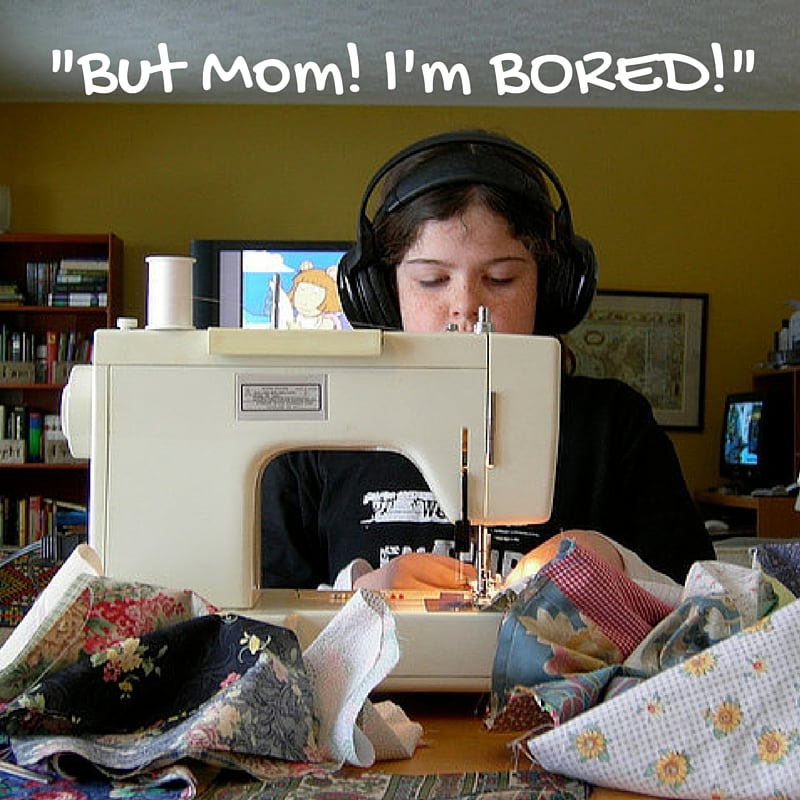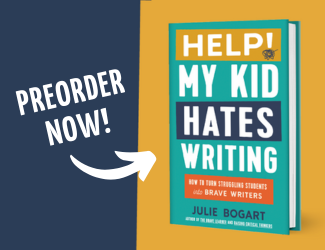“But I’m bored!”

There’s a difference between boredom, and the quiet space and time that lead to new activity.
Children are without resources. They come into the world wholly dependent on you to show them the way, to provide for them, to create their environment.
When a child complains, “I’m bored,” it usually means that the current environment appears flat. They can’t see the possibilities any more. They’re used to the furniture, the materials, the toys, the games, the places these are housed. Routine and predictability are good for a smoothly flowing life, but they can be the enemy of creativity.
Rather than abandoning your child to his or her boredom, help your child to reinterpret the space. You don’t need to make suggestions (bored kids are notorious for shooting down each one as tedious, too difficult, not interesting). The suggestions feel coercive to the bored person, and not like they will create the relief being sought.
Rather, boredom can foster creativity if the parent wisely redirects the child into reflection combined with seeing the old with new eyes. Rather than saying, “Go play with your Legos,” you might say, “I wonder how else Legos can be used besides for building things…”
You might offer, “I bet if you hid behind the couch for 15 minutes with your flashlight, you might get some new ideas.”
Sometimes feeding your child helps. You could say, “While you figure out what to do next, have some crackers and cheese.”
You could turn your child loose with a new, more advanced tool.
“Take pictures with my camera while you figure out what you want to do.”
“What if you put on make up to look like (favorite character right now) while you think about what to do next? Use my kit upstairs.”
“If you want to use the mixer (or any appliance) for a new project, let me know and I’ll show you how it’s operated.”
“I find drawing helps me think of things to do. Do you want to borrow my ‘special Mommy markers’ for added magic?”
You can share methods that have helped you conquer your boredom:
“Maybe you will find something to do by clicking around the Internet for 15 minutes.”
“When I get bored, I page through magazines, walk around the block, read a chapter from a book, drink tea, go exercise… Any of those sound good to you?”
And you can do things silently:
- Put a new hat or scarf on top of the dress-up clothes and move the basket to the middle of the room.
- Arrange the library books on a coffee table in a stack.
- Add brand new drawing utensils or decks of cards to the game drawer.
- Bring the sheets and blankets downstairs out of the linen closet and tell your kids they can use them any way they want.
- Put the microscope on the table when it’s not scheduled for use.
Your role in facilitating creativity is to help foster an environment that awakens curiosity to explore a new function or new pursuit, that relieves the mundane from its tedium, and that leads to new uses of old things. Your job isn’t to solve the boredom with a scripted activity.
If after giving your kids these incentives, they continue to look bored, just know that this is the quiet, evolving space that leads to a new idea. You can offer comfort for the process:
“I bet it’s frustrating when nothing interests you… no matter what! I hope it doesn’t last long. Let me know if you need something from me.”
Then move on.
It won’t be too long before the new interest arises.
Tags: cures for boredom

















